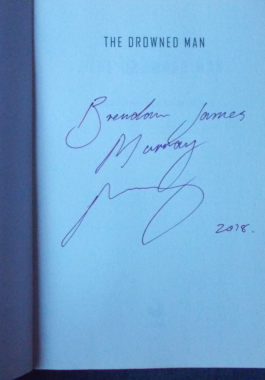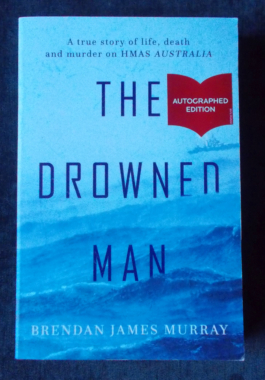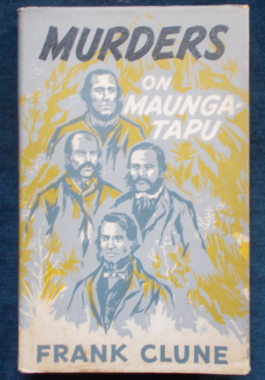- Sorry, this product is unavailable.
-
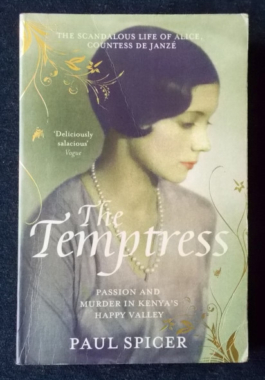 Alice de Janzé, glamorous American heiress, scandalised 1920's Paris when she left her aristocratic French husband for an English lover - whom she later tried to kill in a failed murder-suicide in the Gare du Nord. Abandoning Paris for the moneyed British colonial society known as Kenya's Happy Valley, she became the lover of the handsome womaniser, Joss Hay, Lord Erroll. In 1941, Erroll was found shot in his car on an isolated road. A cuckolded husband was brought to trial and acquitted... and the crime remained tantalizingly unsolved. The author's mother was one of Alice's confidantes, and after his mother's death found a wealth of Alice's personal letters, photographs and sketches. He began researching extensively to piece together what really happened that fateful evening and moreover, brings to life an era of unimaginable wealth and indulgence, where people changed bed partners as easily as they would order a cocktail and where jealousy and hidden passions brewed.This may be the solution of the murder of Lord Erroll.
Alice de Janzé, glamorous American heiress, scandalised 1920's Paris when she left her aristocratic French husband for an English lover - whom she later tried to kill in a failed murder-suicide in the Gare du Nord. Abandoning Paris for the moneyed British colonial society known as Kenya's Happy Valley, she became the lover of the handsome womaniser, Joss Hay, Lord Erroll. In 1941, Erroll was found shot in his car on an isolated road. A cuckolded husband was brought to trial and acquitted... and the crime remained tantalizingly unsolved. The author's mother was one of Alice's confidantes, and after his mother's death found a wealth of Alice's personal letters, photographs and sketches. He began researching extensively to piece together what really happened that fateful evening and moreover, brings to life an era of unimaginable wealth and indulgence, where people changed bed partners as easily as they would order a cocktail and where jealousy and hidden passions brewed.This may be the solution of the murder of Lord Erroll. -
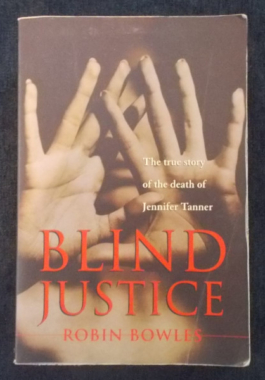 In 1996 Robin Bowles, a Melbourne company director, read a newspaper report about a task force that had been set up to re-investigate the circumstances surrounding the alleged suicide of Victorian country housewife Jennifer Tanner.The reason for the renewed interest was the the discovery of human remains in a mineshaft near the property where Jenny had died. Deeply puzzled by the mass of anomalies in the case, Robin went searching for answers. How, for instance, could Jenny have shot herself twice in the brain- after shooting both her hands first? Since there was no note nor proof of intention, could the findings from the original post-mortem have been influenced by other parties? And was Jenny's death connected to the body in the mine? What unfolds is a bizarre tangle of police bungles, cover-ups and family intrigue.
In 1996 Robin Bowles, a Melbourne company director, read a newspaper report about a task force that had been set up to re-investigate the circumstances surrounding the alleged suicide of Victorian country housewife Jennifer Tanner.The reason for the renewed interest was the the discovery of human remains in a mineshaft near the property where Jenny had died. Deeply puzzled by the mass of anomalies in the case, Robin went searching for answers. How, for instance, could Jenny have shot herself twice in the brain- after shooting both her hands first? Since there was no note nor proof of intention, could the findings from the original post-mortem have been influenced by other parties? And was Jenny's death connected to the body in the mine? What unfolds is a bizarre tangle of police bungles, cover-ups and family intrigue. -
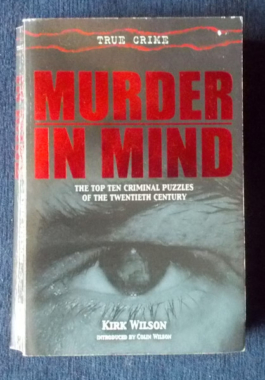 Investigative journalist Kirk Wilison tackles some of the most high-profile and confusing crimes to go unpunished. The investigations of top-ranking police officers, detectives and lawyers all failed to crack the riddles these cases created: who was responsible? And why were they never brought to justice? These are the crimes that we can never stop wondering about. Cases examined in this volume: John F. Kennedy's assassination; Jimmy Hoffa, union leader and mob associate, whose body was never found; Marilyn Monroe, screen goddess, whose 'suicide' raised more questions than it answered; Lord Lucan, peer and gambling addict, who vanished ito thin air amid accusations of murder; T. Cullen Davis, born-again Christian and the richest man ever to be tried for murder; Serge Rubenstein, the virtuoso swindler whose case was clouded by the fact that thousands of people had reason to wish him dead. Claus Von Bulow, lawyer, consultant and socialite, who made two attempts on the life of his American wife; Joan Robinson Hill may have been murdered by her husband John Hill - then it seemed that John Hill himself was murdered on his own front doorstep - but was he? Helen Vorhees Brach, who disappeared at age 65 - the victim of a slick pure-bred horse salesman?
Investigative journalist Kirk Wilison tackles some of the most high-profile and confusing crimes to go unpunished. The investigations of top-ranking police officers, detectives and lawyers all failed to crack the riddles these cases created: who was responsible? And why were they never brought to justice? These are the crimes that we can never stop wondering about. Cases examined in this volume: John F. Kennedy's assassination; Jimmy Hoffa, union leader and mob associate, whose body was never found; Marilyn Monroe, screen goddess, whose 'suicide' raised more questions than it answered; Lord Lucan, peer and gambling addict, who vanished ito thin air amid accusations of murder; T. Cullen Davis, born-again Christian and the richest man ever to be tried for murder; Serge Rubenstein, the virtuoso swindler whose case was clouded by the fact that thousands of people had reason to wish him dead. Claus Von Bulow, lawyer, consultant and socialite, who made two attempts on the life of his American wife; Joan Robinson Hill may have been murdered by her husband John Hill - then it seemed that John Hill himself was murdered on his own front doorstep - but was he? Helen Vorhees Brach, who disappeared at age 65 - the victim of a slick pure-bred horse salesman? -

The Butchers: Brian Lane
$6.00What is the most effective way to dispose of a troublesome corpse? Eat it? Dip it in a vat of acid? Feed it to the pigs - or turn it into sausages? Just pop it in a furnace, maybe...? There's more than thirty cases here: from Catherine Hayes who set a trend in dismemberment in 1726 when she hacked off her husband's head and tossed it into the Thames, to Dennis Nilson who was doing much the same to his victims in 1983; from Marcel Petiot's quicklime pits in Occupied Paris, to New York's infamous Albert 'The Cannibal' Fish. Yet however meticulous and ingenious, none of them got away with it - painstaking investigation and forensics led to the final unmasking of the sadists and psychotics who sought such bloody concealment of their crimes. With black and white photographs. -
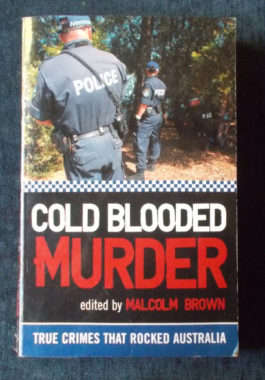 The true crimes that rocked Australia...Why do some people cross the threshold from rational behaviour to cold blooded murder? How can they do it? What motivates or activates that ability? Malcolm Brown and other award winning journalists examine the most cold blooded killings in modern day Australia. In this volume: The Murder of John Newman, M.P.; The Murderous Rampage of Danny Karam's Gang; The Bodies in the Barrels, Snowtown; The Murder of Margaret Tobin; Retribution in Wollongong: Paedophilia's Chain Reaction; Murder on Sydney's Northern Beaches; The Serial Infanticide of Kathleen Folbigg; The Murder of Maria Korp; The Spear-Gun Killer John Sharpe; Bumbling Matricide - The Murder of Margaret Wales-King and Paul King; Sef Gonzales - Getting Around the Problem of Poor Marks. Illustrated with black and white photographs.
The true crimes that rocked Australia...Why do some people cross the threshold from rational behaviour to cold blooded murder? How can they do it? What motivates or activates that ability? Malcolm Brown and other award winning journalists examine the most cold blooded killings in modern day Australia. In this volume: The Murder of John Newman, M.P.; The Murderous Rampage of Danny Karam's Gang; The Bodies in the Barrels, Snowtown; The Murder of Margaret Tobin; Retribution in Wollongong: Paedophilia's Chain Reaction; Murder on Sydney's Northern Beaches; The Serial Infanticide of Kathleen Folbigg; The Murder of Maria Korp; The Spear-Gun Killer John Sharpe; Bumbling Matricide - The Murder of Margaret Wales-King and Paul King; Sef Gonzales - Getting Around the Problem of Poor Marks. Illustrated with black and white photographs. -
 Neighbors were unaware of what went on behind the tightly closed doors of a house in Fresno, California - the home of the imposing, 300-pound Marcus Wesson, his wife, children, nieces and grandchildren. But on March 12, 2004, gunshots were heard inside the Wesson home and police officers, responding to what they believed was a routine domestic disturbance, were horrified by the senseless carnage they discovered when they entered. This is a chilling true story of incest, abuse, madness and murder - it is one family's terrible and ultimately fatal ordeal at the hands of a powerful, manipulative man - a cultist who envisioned vengeful gods and vampires, and totally controlled those closest to him before their world came to a brutal and bloody halt. Illustrated with black and white photos.
Neighbors were unaware of what went on behind the tightly closed doors of a house in Fresno, California - the home of the imposing, 300-pound Marcus Wesson, his wife, children, nieces and grandchildren. But on March 12, 2004, gunshots were heard inside the Wesson home and police officers, responding to what they believed was a routine domestic disturbance, were horrified by the senseless carnage they discovered when they entered. This is a chilling true story of incest, abuse, madness and murder - it is one family's terrible and ultimately fatal ordeal at the hands of a powerful, manipulative man - a cultist who envisioned vengeful gods and vampires, and totally controlled those closest to him before their world came to a brutal and bloody halt. Illustrated with black and white photos. -
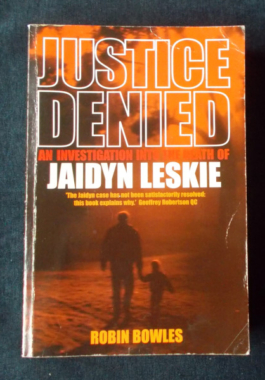 This is the book the Victorian police did not want written. On 14 June 1997, a toddler is left alone in the middle of the night while the babysitter collects his mother from a party. In their absence, the windows are smashed and a severed pig's head is thrown into the room where the child was left sleeping. On their return, the pig's head is is waiting and the child has vanished. Within twenty-four hours the Homicide Squad rules out any involvement of the 'pig's head team' (the vandals who left the pig's head and smashed the windows, determined by police to be an unrelated act of revenge against Domaszewicz) or anyone else in the baby's disappearance and settles on the babysitter as the prime suspect. The child was Jaidyn Leskie. The suspect, Greg Domaszewicz, was arrested, charged and eventually acquitted of murdering Jaidyn. Case closed - or is it? Featuring exclusive interviews and evidence made public for the first time, this is a tightly woven building of this unsolved mystery that builds to a conclusion that could leave the reader sleepless...Illustrated with black and white photos.
This is the book the Victorian police did not want written. On 14 June 1997, a toddler is left alone in the middle of the night while the babysitter collects his mother from a party. In their absence, the windows are smashed and a severed pig's head is thrown into the room where the child was left sleeping. On their return, the pig's head is is waiting and the child has vanished. Within twenty-four hours the Homicide Squad rules out any involvement of the 'pig's head team' (the vandals who left the pig's head and smashed the windows, determined by police to be an unrelated act of revenge against Domaszewicz) or anyone else in the baby's disappearance and settles on the babysitter as the prime suspect. The child was Jaidyn Leskie. The suspect, Greg Domaszewicz, was arrested, charged and eventually acquitted of murdering Jaidyn. Case closed - or is it? Featuring exclusive interviews and evidence made public for the first time, this is a tightly woven building of this unsolved mystery that builds to a conclusion that could leave the reader sleepless...Illustrated with black and white photos. -
 A revised, expanded collection of true crime by Australia's foremost crime writers that digs beneath the polite exterior of modern Australian life to expose its chilling core. It details the exploits of criminal families and examines the gene of pure evil that drives maniacs to randomly kill; it also explores the effect on innocent victims caught in the wrong place at the wrong time. Also included is the unstinting contribution from the cops who daily put their lives on the line and the ordinary individuals who stand up and fight back. Stories in this volume include: Donald Mackay and the Australia Mafia; the Queen Street Massacre; Ivan Milat; serial killer Paul Denyer; the Anita Cobby murder; the murder of taxi driver Peter Coe by teenagers; the Crawford murders; life as an undercover cop; and much more. Illustrated with black and white photographs.
A revised, expanded collection of true crime by Australia's foremost crime writers that digs beneath the polite exterior of modern Australian life to expose its chilling core. It details the exploits of criminal families and examines the gene of pure evil that drives maniacs to randomly kill; it also explores the effect on innocent victims caught in the wrong place at the wrong time. Also included is the unstinting contribution from the cops who daily put their lives on the line and the ordinary individuals who stand up and fight back. Stories in this volume include: Donald Mackay and the Australia Mafia; the Queen Street Massacre; Ivan Milat; serial killer Paul Denyer; the Anita Cobby murder; the murder of taxi driver Peter Coe by teenagers; the Crawford murders; life as an undercover cop; and much more. Illustrated with black and white photographs. -
 It can take years for love to turn to murderous hate - or it can happen overnight. What drives a woman or man to committ the ultimate betrayal - to take the life of a parent, a child, a sibling, a lover? This is a volume of unflicnhing exploration of fourteen well-known - and not so well-known - murder in the family cases and it takes the reader inside the life and mind of both the killer and victim. The cases include: The slaying of Maureen Thompson by her husband Rory; the murders of the four Folbigg children by their mother Kathleen; the sudden explosion of murderous rage within Sef Gonzales that resulted in the destruction of those closest to him; and more. Illustrated with black and white and colour photographs.
It can take years for love to turn to murderous hate - or it can happen overnight. What drives a woman or man to committ the ultimate betrayal - to take the life of a parent, a child, a sibling, a lover? This is a volume of unflicnhing exploration of fourteen well-known - and not so well-known - murder in the family cases and it takes the reader inside the life and mind of both the killer and victim. The cases include: The slaying of Maureen Thompson by her husband Rory; the murders of the four Folbigg children by their mother Kathleen; the sudden explosion of murderous rage within Sef Gonzales that resulted in the destruction of those closest to him; and more. Illustrated with black and white and colour photographs. -
 Joseph Mengele, the camp doctor at Auschwitz, was personally responsible for the murder of nearly 400,000 people and for the torture of thousands more as part of his 'scientific' experiments. Yet he evaded capture for 40 years and it is only after the discovery of his body in a Brazilian cemetery, that his full story could be told. This investigative biography traces Mengele's roots and examines the forces that made him into a mass murderer and torturer; follows Mengele the fugitive after his flight from Auschwitz and looks at the conspiracy in Germany and Latin America that saved Mengele from justice. This is not only an exposé of Mengele as the very embodiment of evil and the system that spawned him; it is also an explanation of the many 'ordinary' people who shielded and sustained the monster to the grave and beyond. Illustrated with black and white photos.
Joseph Mengele, the camp doctor at Auschwitz, was personally responsible for the murder of nearly 400,000 people and for the torture of thousands more as part of his 'scientific' experiments. Yet he evaded capture for 40 years and it is only after the discovery of his body in a Brazilian cemetery, that his full story could be told. This investigative biography traces Mengele's roots and examines the forces that made him into a mass murderer and torturer; follows Mengele the fugitive after his flight from Auschwitz and looks at the conspiracy in Germany and Latin America that saved Mengele from justice. This is not only an exposé of Mengele as the very embodiment of evil and the system that spawned him; it is also an explanation of the many 'ordinary' people who shielded and sustained the monster to the grave and beyond. Illustrated with black and white photos. -
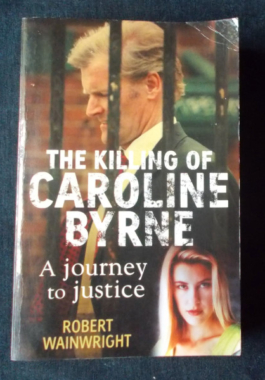 On a bleak, moonless winter night in 1995 beautiful Sydney model Caroline Byrne died, her body embedded head-first into a crevice at the bottom of The Gap at the entrance to Sydney Harbor. How did she get out so far, almost 12 meters from the base of the sheer sandstone precipice? Did she jump, as so many had done before at the notorious suicide spot, or had she been thrown in a fit of rage? What began as a sad ritual of retrieving the shattered bodies of shattered lives turned into one of the nation's most extraordinary murder investigations, leading to the dark heart of a city gripped by greed, pandering to its powerful and exposing a police force whose lack of imagination and resources was surpassed only by the doggedness of its finest officers to right an unforgivable wrong. this is a journey to justice: the astonishing inside story of Caroline's father Tony Byrne's determination to find the truth of his daughter's death and in doing so, test the justice system to its limits.
On a bleak, moonless winter night in 1995 beautiful Sydney model Caroline Byrne died, her body embedded head-first into a crevice at the bottom of The Gap at the entrance to Sydney Harbor. How did she get out so far, almost 12 meters from the base of the sheer sandstone precipice? Did she jump, as so many had done before at the notorious suicide spot, or had she been thrown in a fit of rage? What began as a sad ritual of retrieving the shattered bodies of shattered lives turned into one of the nation's most extraordinary murder investigations, leading to the dark heart of a city gripped by greed, pandering to its powerful and exposing a police force whose lack of imagination and resources was surpassed only by the doggedness of its finest officers to right an unforgivable wrong. this is a journey to justice: the astonishing inside story of Caroline's father Tony Byrne's determination to find the truth of his daughter's death and in doing so, test the justice system to its limits. -
 Discover surprising answers in this true-crime treasury of 100 of the most fascinating cases of all time. More than two centuries in the development of modern forensic procedures come to vivid life as everything from handwriting analyses and voiceprints to ballistics, DNA testing and psychological profiles reveal who did it - and, in some startling cases, who didn't do it. Categories: Ballistics; Cause Of Death; Disputed Documents; DNA Typing; Explosives And Fire; Fingerprinting; Forensic Anthropology; Odontology; Psychological Profiling; Identification Of Remains; Serology; Time Of Death; Trace Evidence; Voice Printing. The cases detailed herein range from the 189os to the 1990s. Illustrated with black and white photographs.
Discover surprising answers in this true-crime treasury of 100 of the most fascinating cases of all time. More than two centuries in the development of modern forensic procedures come to vivid life as everything from handwriting analyses and voiceprints to ballistics, DNA testing and psychological profiles reveal who did it - and, in some startling cases, who didn't do it. Categories: Ballistics; Cause Of Death; Disputed Documents; DNA Typing; Explosives And Fire; Fingerprinting; Forensic Anthropology; Odontology; Psychological Profiling; Identification Of Remains; Serology; Time Of Death; Trace Evidence; Voice Printing. The cases detailed herein range from the 189os to the 1990s. Illustrated with black and white photographs. -
 On December 10, 2003 an intruder waits inside the home of Kent and Tricia Whitaker. They and their two sons, Bart and Kevin, are returning from a dinner celebrating Bart's college graduation. Four shots ring out: Tricia and Kevin are killed instantly, Kent is wounded and Bart. struggling with the gunman, is also wounded. Three days later, as investigators explore leads in the search for justice for the victims, they find Bart had been leading a double life and he becomes the chief suspect. Kent believes the police are allowing the real killer to escape while they focus on Bart but when Bart disappears in the mountains of Mexico seven months later, Kent must face the possibility his son was involved in the murder. Fifteen months later, Bart is arrested and charged with masterminding the shootings; in March 2007, he is convicted and sentenced to death. How can a father survive the anguish of his son's actions and forgive such betrayal?
On December 10, 2003 an intruder waits inside the home of Kent and Tricia Whitaker. They and their two sons, Bart and Kevin, are returning from a dinner celebrating Bart's college graduation. Four shots ring out: Tricia and Kevin are killed instantly, Kent is wounded and Bart. struggling with the gunman, is also wounded. Three days later, as investigators explore leads in the search for justice for the victims, they find Bart had been leading a double life and he becomes the chief suspect. Kent believes the police are allowing the real killer to escape while they focus on Bart but when Bart disappears in the mountains of Mexico seven months later, Kent must face the possibility his son was involved in the murder. Fifteen months later, Bart is arrested and charged with masterminding the shootings; in March 2007, he is convicted and sentenced to death. How can a father survive the anguish of his son's actions and forgive such betrayal? -
 On April 4th, 1968, Dr. Martin Luther King, Jr. stepped out onto the balcony of the Lorraine Motel in Memphis, Tennessee, and into his killer's line of fire. One shot ended Dr. King's life and forever changed the course of American history - setting into motion a massive cover-up that has withstood a quarter-century of scrutiny. Now, after 18 years of intensive investigation, William F. Pepper tears away the veil of subterfuge that has hidden the truth of King's death - proving the innocence of convicted assassin James Earl Rayand revealing the cabal of government leaders and organised crime figures that masterminded the assassination of one of the most influential leaders of our age. The author was an associate of Dr. King and executive director of the independent political coalition that hoped to put King forward as a third party presidential candidate in 1968. After the murder, Pepper walked away from politics. But in 1977. Reverend Ralph Abernathy asked Pepper to interview James Earl Ray. Initially sceptical, Pepper became convinced that Ray was innocent of the crime and that Ray had always claimed, he had been manipulated by a man named Raul and was the victim of a set-up. But who was behind the set-up - and why?
On April 4th, 1968, Dr. Martin Luther King, Jr. stepped out onto the balcony of the Lorraine Motel in Memphis, Tennessee, and into his killer's line of fire. One shot ended Dr. King's life and forever changed the course of American history - setting into motion a massive cover-up that has withstood a quarter-century of scrutiny. Now, after 18 years of intensive investigation, William F. Pepper tears away the veil of subterfuge that has hidden the truth of King's death - proving the innocence of convicted assassin James Earl Rayand revealing the cabal of government leaders and organised crime figures that masterminded the assassination of one of the most influential leaders of our age. The author was an associate of Dr. King and executive director of the independent political coalition that hoped to put King forward as a third party presidential candidate in 1968. After the murder, Pepper walked away from politics. But in 1977. Reverend Ralph Abernathy asked Pepper to interview James Earl Ray. Initially sceptical, Pepper became convinced that Ray was innocent of the crime and that Ray had always claimed, he had been manipulated by a man named Raul and was the victim of a set-up. But who was behind the set-up - and why? -
 October, 2011: At first it looked like a swag, said the grader driver who found the body just off the road outside the outback town of Katherine. Police identify the dead man as Ray Nicefero, who'd recently appeared in court for aggravated assault and breaching a domestic violence order. Three days later, three young local suspects were arrested: Christopher Malyschko; Darren 'Spider' Halfpenny; and 19-year-old indigenous Zak Grieve. A month later, Bronwyn Buttery, Ray's former partner and Christopher's mother, is arrested. But when the accused face court in the rough justice system of the Northern Territory, it soon becomes apparent there are few certain, provable facts to be had. Depending on who was talking, a loving friend could be an abusive monster; a battered wife a conniving temptress. And a joke between mates about the best way to dispose of a body becomes a conspiracy to murder. The outcome of the case is no less murky, thanks to the NT's mandatory sentencing laws, which, the judge said, 'brings about injustice'. This is the story of murder in an outback town and the extraordinary aftermath; and it raises important questions such as how an indigenous man who was not present at a murder can be sentenced to jail for twenty years.
October, 2011: At first it looked like a swag, said the grader driver who found the body just off the road outside the outback town of Katherine. Police identify the dead man as Ray Nicefero, who'd recently appeared in court for aggravated assault and breaching a domestic violence order. Three days later, three young local suspects were arrested: Christopher Malyschko; Darren 'Spider' Halfpenny; and 19-year-old indigenous Zak Grieve. A month later, Bronwyn Buttery, Ray's former partner and Christopher's mother, is arrested. But when the accused face court in the rough justice system of the Northern Territory, it soon becomes apparent there are few certain, provable facts to be had. Depending on who was talking, a loving friend could be an abusive monster; a battered wife a conniving temptress. And a joke between mates about the best way to dispose of a body becomes a conspiracy to murder. The outcome of the case is no less murky, thanks to the NT's mandatory sentencing laws, which, the judge said, 'brings about injustice'. This is the story of murder in an outback town and the extraordinary aftermath; and it raises important questions such as how an indigenous man who was not present at a murder can be sentenced to jail for twenty years. -
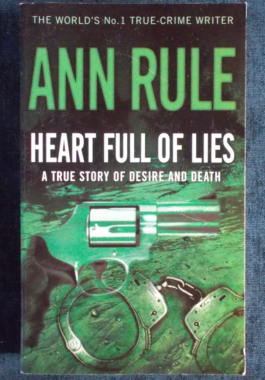
Heart Full Of Lies: Ann Rule
$10.00Liysa and Chris Norton seemed the perfect couple: Chris - tall, athletic and handsome, a pilot for Hawaiian Airlines; Liysa - attractive, seductive, an acclaimed surf photographer. Their son, Bjorn, looked just like his dad and they were raising Liysa's son by a previous marriage. They had beautiful homes on the mainland and in Hawaii. But soon after their idyllic marriage on a moonlit beach, Liysa revealed a rapacious side that Chris had not seen before, and she complained to her friends that Chris was a heavy drinker who beat her. Chris struggled to keep the marriage from unravelling but on a sunny morning in October 2000 he lay dead at a remote campsite. Liysa drove in distress to a friend's house - it appeared that she had been attacked and claimed that she had shot Chris in self-defence but the Oregon state detectives were suspicious of her account. Crime scene evidence led detectives to wonder if Liysa was a killer, not a victim. Her controversial trial stunned all who thought they knew her. A lifetime of sociopathic manipulations and lies had been expertly hidden behind her façade of perfection - as was her rage to destroy any obstacle to her ultimate happiness, even if it was the man she vowed to love forever. -
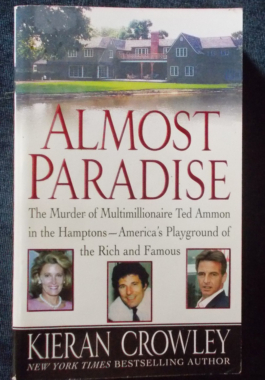 He was a multimillionaire but even his wealth and power could not save him. On October 22, 2001, handsome multimillionaire financier Ted Ammon was found bludgeoned to death in the magnificent East Hampton mansion he'd built with his beautiful - and volatile - wife, Generosa. She stood to make millions, but it wasn't the money that made Ted's friends suspicious: Generosa Ammon had a history of violent outbursts and bizarre obsessions. A talented interior decorator, Generosa had fashioned a lavish lifestyle for her husband and their two children, divided between Fifth Avenue, the Long Island estate, and a manor house in England. But when Generosa discovered Ted had a mistress, her demons were unleashed and she began a very public affair with Danny Pelosi, a strikingly handsome womaniser who was also her electrician. She called him her "tool belt guy." But he was also an ex-con who was suspected of playing a pivotal role in Ted's murder and the final destruction of a once-perfect family. Illustrated with photographs.
He was a multimillionaire but even his wealth and power could not save him. On October 22, 2001, handsome multimillionaire financier Ted Ammon was found bludgeoned to death in the magnificent East Hampton mansion he'd built with his beautiful - and volatile - wife, Generosa. She stood to make millions, but it wasn't the money that made Ted's friends suspicious: Generosa Ammon had a history of violent outbursts and bizarre obsessions. A talented interior decorator, Generosa had fashioned a lavish lifestyle for her husband and their two children, divided between Fifth Avenue, the Long Island estate, and a manor house in England. But when Generosa discovered Ted had a mistress, her demons were unleashed and she began a very public affair with Danny Pelosi, a strikingly handsome womaniser who was also her electrician. She called him her "tool belt guy." But he was also an ex-con who was suspected of playing a pivotal role in Ted's murder and the final destruction of a once-perfect family. Illustrated with photographs. -

Crime Scene: Esther McKay
$22.00Day after day my life was consumed by killings, distress and gruesome sites, each one adding another piece to an ever-growing mosaic that seemed to be made up of bloodied disposable gloves, plastic bags and human waste... When Esther McKay, an idealistic young constable with the NSW police, entered the tough, male-dominated world of forensic investigation, she was determined to hold her own. She soon found herself at deeply confronting crime scenes, often working alone and without supervision. After years of long, lonely, exhausting days and nights, and following a particularly harrowing high-profile case involving the disappearance of two young boys, Esther had a break-down and was diagnosed with post-traumatic stress disorder. Esther McKay takes us inside the life of a forensic investigator, and reveals as never before the extraordinary demands and dangers of forensic work. -
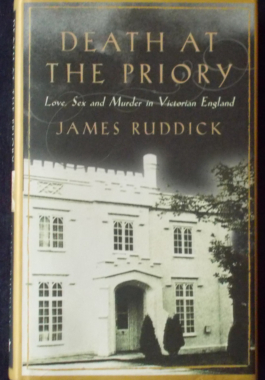 In 1875, beautiful, vivacious widow Florence Ricardo married Charles Bravo, a dashing barrister. The marriage seemed to be a happy one, although society gossips whispered that Bravo had married Florence for her fortune. Behind his charming public persona, Bravo was a brutal, vindictive man who dismissed his wife's devoted companion Mrs. Cox and regularly subjected Florence to violent abuse. Four months after the wedding, Bravo collapsed and for fifty-five hours - with some of London's most distinguished physicians in attendance - suffered a slow and agonising death. All the doctors agreed - he had been poisoned. The police were called in and everyone in the Priory, the house in South London in which he and Florence had lived, was under suspicion. The investigation was detailed and sensational and such was the public interest that it even eclipsed the coverage of the Prime Minister's negotiations with Egypt and the Prince of Wales' tour of India. The suspects included Mrs. Cox; George Griffiths, a coachman with a grudge against Bravo and at Florence Bravo herself. This is the recreation of the case with new evidence to conclusively prove who did kill Charles Bravo.
In 1875, beautiful, vivacious widow Florence Ricardo married Charles Bravo, a dashing barrister. The marriage seemed to be a happy one, although society gossips whispered that Bravo had married Florence for her fortune. Behind his charming public persona, Bravo was a brutal, vindictive man who dismissed his wife's devoted companion Mrs. Cox and regularly subjected Florence to violent abuse. Four months after the wedding, Bravo collapsed and for fifty-five hours - with some of London's most distinguished physicians in attendance - suffered a slow and agonising death. All the doctors agreed - he had been poisoned. The police were called in and everyone in the Priory, the house in South London in which he and Florence had lived, was under suspicion. The investigation was detailed and sensational and such was the public interest that it even eclipsed the coverage of the Prime Minister's negotiations with Egypt and the Prince of Wales' tour of India. The suspects included Mrs. Cox; George Griffiths, a coachman with a grudge against Bravo and at Florence Bravo herself. This is the recreation of the case with new evidence to conclusively prove who did kill Charles Bravo. -
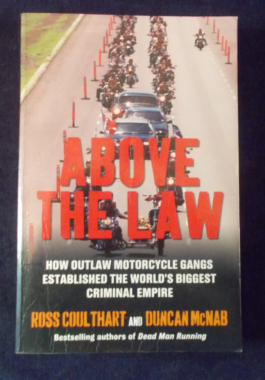 A forensic examination of the global future of organised crime - now being operated on a massive scale by outlaw motorcycle gang - and the difficulties faced by the Australian police in tackling the burgeoning crime empire that outlaw motorcycle gangs are developing in Australia and wherever else biker gangs flourish. It's a hard and chilling look at the global future of organised crime and reveals that the world's most successful criminal empire is now being operated on a massive scale by outlaw motorcycle gangs - an empire that is growing in power, reach and ruthlessness, far surpassing the threats posed by the Mafia, Russian syndicates, Chinese Triads and Japanese Yakuza. Outlaw motorcycle gangs are now being acknowledged as the greatest current organised crime threat with an international empire that is sophisticated, bloody and brutal. It is also both strategic and opportunistic - where they cannot dominate, they broker alliances. Here is how it all started: the turf wars that were fought, the deals that were done, and how the sea of cash that was earned is now being legitimised. It also reveals how law enforcement at an international level is losing the battle against the gangs. Using exclusive insider sources on four continents, this is the first contemporary account of one of the biggest criminal stories of our time.
A forensic examination of the global future of organised crime - now being operated on a massive scale by outlaw motorcycle gang - and the difficulties faced by the Australian police in tackling the burgeoning crime empire that outlaw motorcycle gangs are developing in Australia and wherever else biker gangs flourish. It's a hard and chilling look at the global future of organised crime and reveals that the world's most successful criminal empire is now being operated on a massive scale by outlaw motorcycle gangs - an empire that is growing in power, reach and ruthlessness, far surpassing the threats posed by the Mafia, Russian syndicates, Chinese Triads and Japanese Yakuza. Outlaw motorcycle gangs are now being acknowledged as the greatest current organised crime threat with an international empire that is sophisticated, bloody and brutal. It is also both strategic and opportunistic - where they cannot dominate, they broker alliances. Here is how it all started: the turf wars that were fought, the deals that were done, and how the sea of cash that was earned is now being legitimised. It also reveals how law enforcement at an international level is losing the battle against the gangs. Using exclusive insider sources on four continents, this is the first contemporary account of one of the biggest criminal stories of our time. -
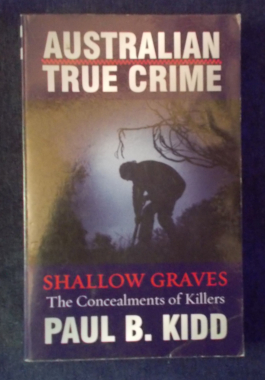 Shallow graves play a grim part in many of Australia's most mysterious, bizarre and horrendous murder cases. And Australia's bushland, beaches, deserts, foreshores and suburban landscapes offer many opportunities for a murderer to hide his victim. But in this updated edition, Kidd points out how even the best-laid plans of the most devious can go astray when a body turns up. Illustrated with black and white photographs.
Shallow graves play a grim part in many of Australia's most mysterious, bizarre and horrendous murder cases. And Australia's bushland, beaches, deserts, foreshores and suburban landscapes offer many opportunities for a murderer to hide his victim. But in this updated edition, Kidd points out how even the best-laid plans of the most devious can go astray when a body turns up. Illustrated with black and white photographs. -
 After fourteen years of marriage, Mel Jacob's life looked as perfect as the roses perched above her white picket fence. The nice house in the suburbs, two great kids, a good husband. Until...her seemingly saintly husband was jailed for two years. This recounts Mel's funny, moving and insightful journey as she navigates single parenthood, prison visitations and nosy neighbours...and tells of the family left behind: the grief, the stigma and the conversational minefields of her husband's whereabouts, as well as the logistical problems of making a baby sibling for her two children, and why it's not appropriate to tell people that Daddy's in jail. 'So why did you marry Dad?' my daughter asked. 'Well, over time I got to know him and he made me laugh, and - and I knew deep down that, that even though we were really different...he was a good person.' Without skipping a beat, she said, 'He's not that good, he's in jail!'.
After fourteen years of marriage, Mel Jacob's life looked as perfect as the roses perched above her white picket fence. The nice house in the suburbs, two great kids, a good husband. Until...her seemingly saintly husband was jailed for two years. This recounts Mel's funny, moving and insightful journey as she navigates single parenthood, prison visitations and nosy neighbours...and tells of the family left behind: the grief, the stigma and the conversational minefields of her husband's whereabouts, as well as the logistical problems of making a baby sibling for her two children, and why it's not appropriate to tell people that Daddy's in jail. 'So why did you marry Dad?' my daughter asked. 'Well, over time I got to know him and he made me laugh, and - and I knew deep down that, that even though we were really different...he was a good person.' Without skipping a beat, she said, 'He's not that good, he's in jail!'. -
 London, 1910 - the city is rocked by its first encounter with foreign gangsters. In December, a group of Russian anarchists were surprised while burgling a jeweller's shop in Houndsditch. They shot and killed three policemen and wounded two others. Within two weeks, most of the gang had been captured. Then the police were informed that the last two members of the gang were hiding at 100 Sidney Street. The police called in the military, local residents were evacuated and the firefight raged for six hours, culminating in the burning of the house and the discovery of the two agitators' bodies in the ruins. On New Year's Day, Leon Beron, a middle-aged Russian Jew, was found battered to death on Clapham Common. Knife cuts on his cheeks, inflicted after death, formed the shape of a rough 'S' - rumour said it was the revenge murder of an informer, 'S' being the initial letter for 'spy' in both Russian and Polish. Steinie Morrison, who had been seen in his company the night before, was arrested and charged with Beron's murder, and sentenced to hang. This was later commuted to life in prison. Morrison protested the change of sentence and for the next ten years, demanded that the original sentence be carried out, proclaiming his innocence and staging hunger strikes. He never changed his story, not even by the smallest detail, and died ten years later in prison. Was an innocent man convicted? And did the murder of Beron have any connection to the Siege of Sidney Street? With black and white photographs.
London, 1910 - the city is rocked by its first encounter with foreign gangsters. In December, a group of Russian anarchists were surprised while burgling a jeweller's shop in Houndsditch. They shot and killed three policemen and wounded two others. Within two weeks, most of the gang had been captured. Then the police were informed that the last two members of the gang were hiding at 100 Sidney Street. The police called in the military, local residents were evacuated and the firefight raged for six hours, culminating in the burning of the house and the discovery of the two agitators' bodies in the ruins. On New Year's Day, Leon Beron, a middle-aged Russian Jew, was found battered to death on Clapham Common. Knife cuts on his cheeks, inflicted after death, formed the shape of a rough 'S' - rumour said it was the revenge murder of an informer, 'S' being the initial letter for 'spy' in both Russian and Polish. Steinie Morrison, who had been seen in his company the night before, was arrested and charged with Beron's murder, and sentenced to hang. This was later commuted to life in prison. Morrison protested the change of sentence and for the next ten years, demanded that the original sentence be carried out, proclaiming his innocence and staging hunger strikes. He never changed his story, not even by the smallest detail, and died ten years later in prison. Was an innocent man convicted? And did the murder of Beron have any connection to the Siege of Sidney Street? With black and white photographs.





